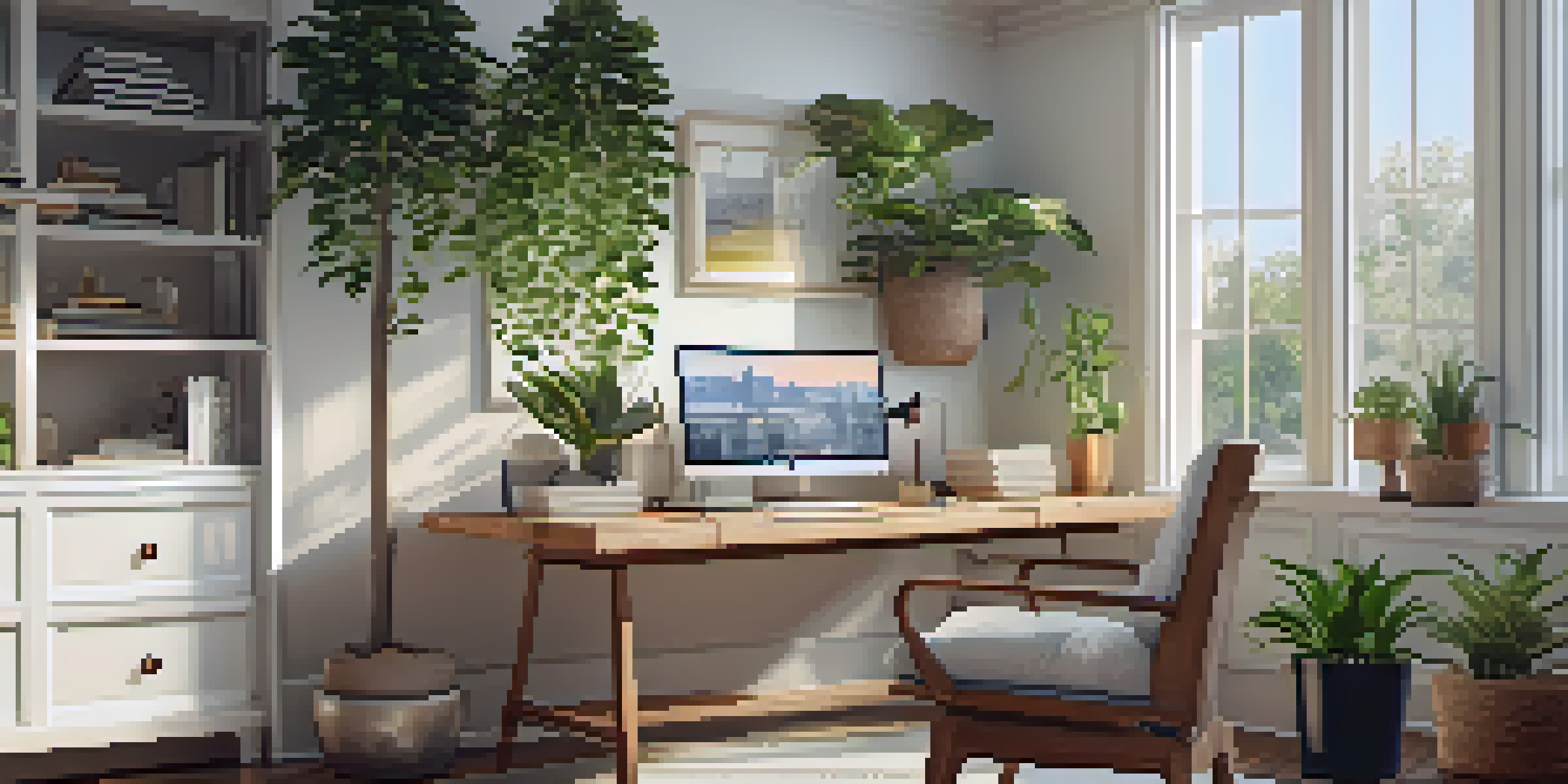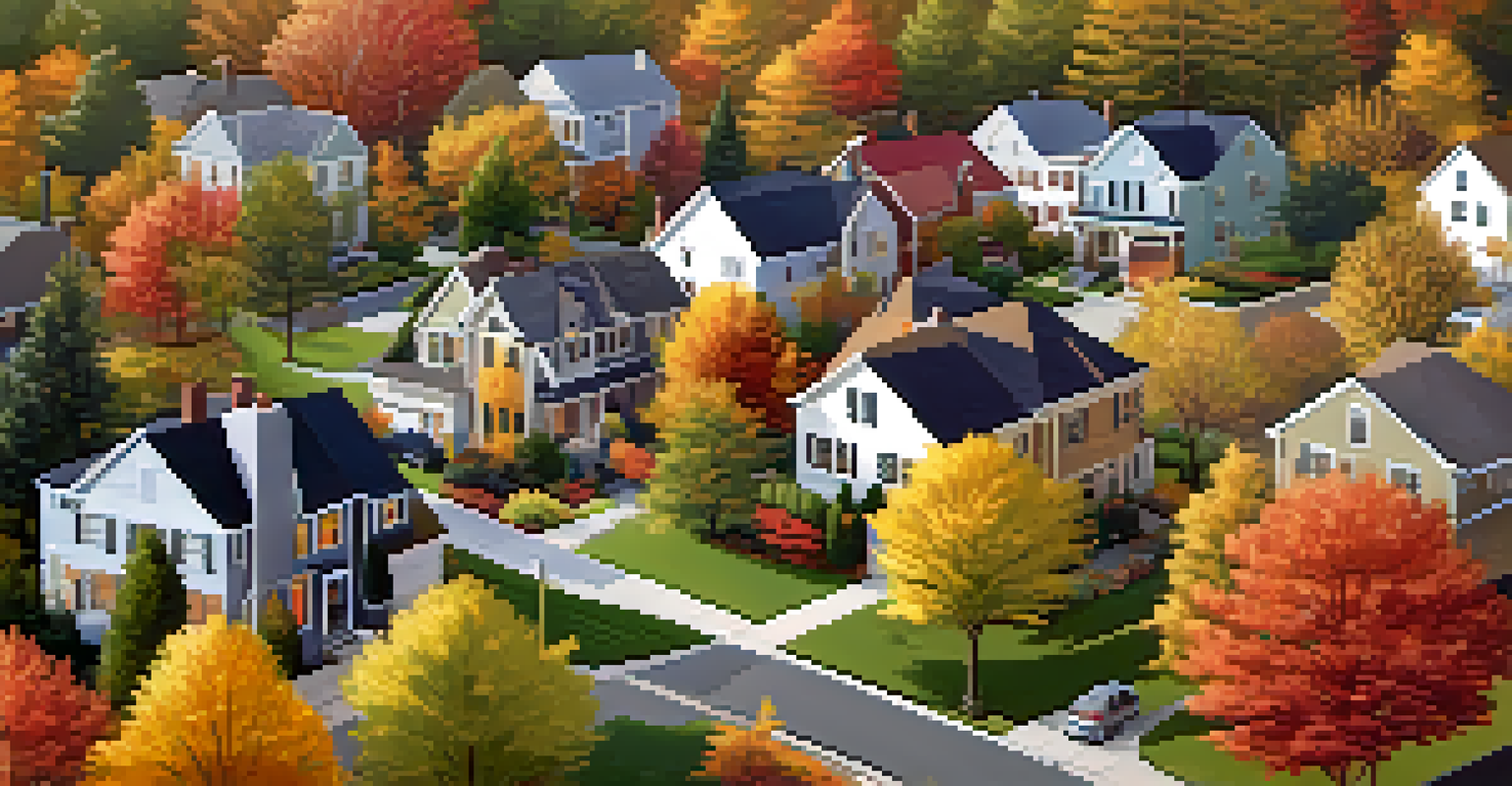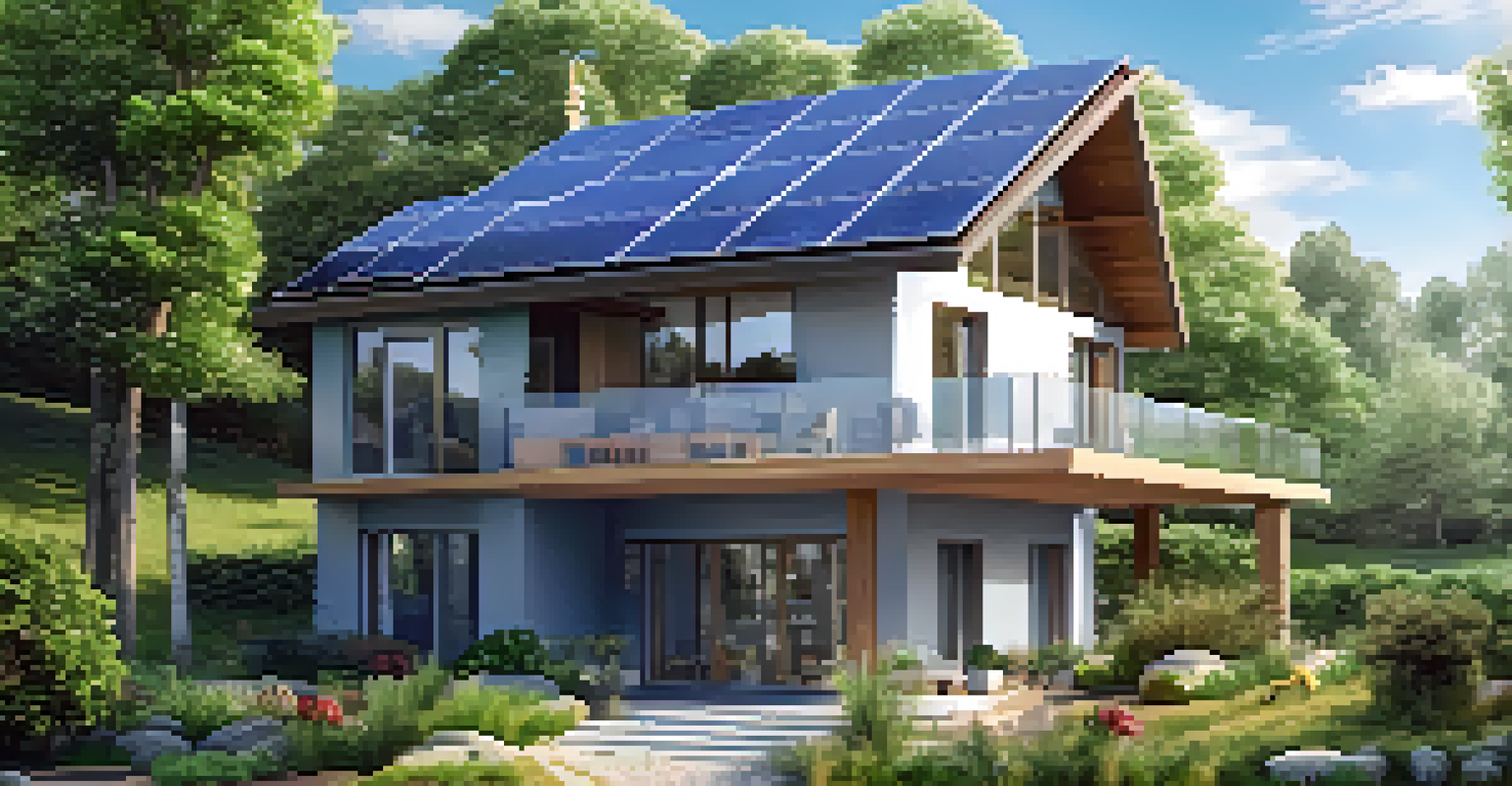Rethinking Urban Living: Remote Work and Housing Choices

The Rise of Remote Work: A New Normal
In recent years, remote work has transitioned from a temporary solution to a lasting trend. The pandemic accelerated this shift, allowing many employees to experience the benefits of working from home. As businesses recognize the advantages of flexible work arrangements, remote work is likely to remain a significant part of our professional landscape.
Remote work is not just a trend, it's a transformation of how we live and work.
This new normal prompts individuals to reconsider where and how they want to live. With the ability to work from anywhere, many people are no longer tethered to urban centers or high-cost living areas. This shift offers an opportunity for individuals to seek out locations that align with their lifestyle and values.
The implications of this change are profound, not just for individuals but for urban planners and housing markets. As remote work continues to influence housing choices, cities may need to adapt to these new preferences, creating spaces that cater to a more diverse population.
Shifting Preferences: Urban vs. Suburban Living
With remote work gaining traction, many individuals are reevaluating their living arrangements. Urban areas, once seen as the epitome of convenience and opportunity, are now facing competition from suburban and even rural locations. For some, the allure of spacious homes, nature, and lower costs is hard to resist.

This shift is reflected in real estate trends, where suburban neighborhoods are experiencing a surge in demand. Families are seeking larger spaces that accommodate not only work-from-home setups but also the need for outdoor areas for recreation. The desire for a balanced lifestyle is reshaping housing choices across the board.
Remote Work is Here to Stay
The pandemic has solidified remote work as a lasting trend, reshaping where people choose to live.
However, the decision isn't solely about space and cost; it also hinges on lifestyle preferences. Some people miss the vibrancy and culture of urban living, leading to a nuanced discussion about what makes a place feel like home.
The Role of Technology in Urban Living
Technology plays a pivotal role in facilitating remote work and influencing housing choices. High-speed internet and smart home technology have become essential for those working from home. These advancements make it easier to create a productive workspace, regardless of location.
The future of work is not about where you work, but how you work and live.
Moreover, technology enables individuals to stay connected with colleagues and friends, reducing the feelings of isolation that can come with remote work. Virtual meetings and collaboration tools have created a seamless work experience that transcends geographical boundaries.
As a result, tech-savvy individuals are more inclined to choose locations that suit their lifestyle rather than those dictated by their jobs. This trend is encouraging a more flexible approach to urban living, prompting a rethinking of how we define work-life balance.
Impact on Housing Demand and Prices
The shift towards remote work is significantly impacting housing demand and prices in various regions. As more individuals seek homes outside traditional urban centers, prices in suburban areas are rising. This trend can make it challenging for first-time homebuyers or those with lower incomes to find affordable housing.
Conversely, urban areas are experiencing fluctuations in demand. Some neighborhoods may see a decline in prices as residents leave for more spacious, affordable options. However, others may thrive, especially those that offer unique amenities or community-focused living.
Suburban Living Gaining Popularity
As remote work becomes the norm, many individuals are moving to suburban areas for more space and affordability.
This dynamic creates a complex landscape for both buyers and sellers. Understanding these trends is crucial for making informed decisions in a rapidly changing housing market.
Redefining Community in a Remote Work Era
As remote work reshapes housing choices, the concept of community is evolving. People are no longer just looking for a place to live; they are seeking neighborhoods that foster connection and support. This desire for community can influence where individuals choose to settle down.
Communities that offer amenities like shared workspaces, parks, and social activities are becoming increasingly appealing. The emphasis on connection can lead to the creation of vibrant, supportive neighborhoods that enhance the remote work experience.
Ultimately, the ability to forge genuine relationships while working remotely is essential for overall well-being. This new focus on community is prompting developers and city planners to rethink how communities are designed and built.
Sustainable Living and Housing Choices
With more individuals working from home, there is a growing emphasis on sustainable living and eco-friendly housing choices. Many people are prioritizing energy-efficient homes, access to public transportation, and proximity to green spaces. This trend aligns with a broader societal push towards environmental responsibility.
Sustainable housing not only benefits the planet but also enhances quality of life. Homes designed with sustainability in mind often provide better air quality, natural light, and outdoor spaces, contributing to overall well-being. The desire for healthier living environments is driving demand for eco-friendly housing options.
Community and Sustainability Matter
People are increasingly seeking neighborhoods that foster connection and prioritize eco-friendly living.
As remote work continues to reshape our lives, the call for sustainable living is likely to grow. This shift presents an opportunity for developers to innovate and create homes that meet the needs of a more conscious consumer base.
Future Trends in Urban Living and Remote Work
Looking ahead, the intersection of urban living and remote work will continue to evolve. As technology advances and work cultures shift, we can expect to see new trends emerge in housing preferences. Factors such as flexible workspaces, wellness features, and community-centric designs may become more prominent.
Urban planners and developers will need to stay attuned to these changes to meet the demands of a changing population. This could lead to more mixed-use developments that blend residential, commercial, and recreational spaces, creating vibrant communities tailored to modern lifestyles.

Ultimately, the future of urban living will hinge on adaptability. As our work and living environments continue to intertwine, we can anticipate exciting developments that reflect the values and needs of a new generation of remote workers.